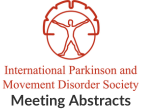Diagnosis and management of Myoclonus Dystonia Syndrome: a Survey of the European Reference Network for Rare Neurological Diseases.
Objective: To evaluate the diagnostic and treatment strategies in Myoclonus Dystonia Syndrome (MDS) used by experts from the European Reference Network for rare neurological diseases…MDSGene systematic review on dopa-responsive dystonia caused by mutations in GCH1, TH, SPR, PTS, or QDPR
Objective: To systematically review information regarding genotype, phenotype, and biochemistry in dopa-responsive dystonia (DRD). Background: To date, five causative genes (GCH1, TH, SPR, PTS, and…A Child with Fever-Induced Paroxysmal Weakness and Encephalopathy with ATP1A3 mutation
Objective: We describe a case of fever-induced paroxysmal weakness and encephalopathy (FIPWE), also known as relapsing encephalopathy with cerebellar ataxia (RECA) and expand the phenotypic…A case of generalized early-onset dystonia with a novel low-penetrant THAP1 missense variant
Objective: To present a new case with generalized dystonia carrying a novel heterozygous likely pathogenic THAP1 variant associated with reduced penetrance Background: Dystonia is a…Recessive CWF19L1 mutations in a family with dystonia-ataxia syndrome
Objective: To enrich the limited clinical and genetic data of an extremely rare recessive ataxia subtype. Background: Advances in NGS techniques led to an increase…Genetic testing in pediatric dystonia and influence of clinical factors on diagnostic yield
Objective: To identify the yield of genetic testing in suspected genetically determined pediatric dystonia. Identify differences in clinical factors among patients with confirmatory and non-confirmatory…Loss‐of‐function mutations in NR4A2 cause dopa‐responsive dystonia-parkinsonism
Objective: To report two patients with early-onset dystonia-parkinsonism as a result of loss-of-function mutations in nuclear receptor subfamily 4 group A member 2 (NR4A2). Background:…A Novel Variant of TUBB4A Dystonia (DYT4): A Case Report
Objective: To describe the clinical presentation of a case of TUBB4A dystonia with a novel genetic variant Background: A missense variant at Arg2Gly in the…Bilateral GPi DBS for the treatment of severe generalized genetic dystonia caused by KMT2B mutation (DYT-28)
Objective: . Background: KMT2B-related dystonia (DYT-28) is a complex childhood-onset movement disorder, characterized by a limb onset dystonia progressing to generalized dystonia with cranio-cervical involvement…Phenotypic heterogeneity in Chinese dystonia patients with KMT2B variants
Objective: Our study is to summarize genotype-phenotype features with KMT2B-related dystonia in China. Background: KMT2B-related dystonia is a recently discovered childhood onset movement disorder. It…
- « Previous Page
- 1
- …
- 15
- 16
- 17
- 18
- 19
- …
- 29
- Next Page »
